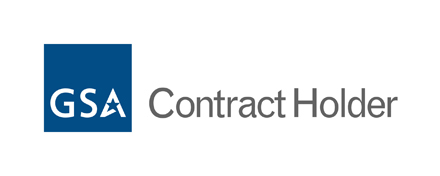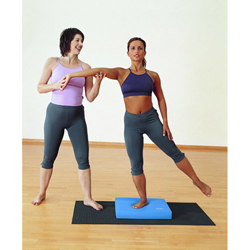Many of us are familiar with the massage therapy term “trigger point.” But, outside of those who work with patients and deliver trigger point therapy on a regular basis, how many of us know how trigger points form? And what can be done to relieve these painful annoyances?
How do they develop?
Trigger points develop as a result of muscular injuries, strains, and trauma. When muscle fibers, fascia, ligaments, or tendons become weakened, overstretched, or inflamed, tiny tears in the associated soft tissue can occur. As the tissue heals it contracts, becoming twisted and knotted. These knotted fibers restrict the fresh blood supply needed by the muscle cells. In addition, there is often a shortening of the muscle fiber to protect itself from further injury.
Additionally, structural imbalances, improper body mechanics, poor nutrition and mental or emotional stress are all factors. In effect, the muscle learns to avoid pain and guards against it by limiting its movement. This results in a loss of range of motion of the joint and the probability that the muscle and associated structures will develop trigger points. 1
Skeletal muscle, the largest single organ of the human body, accounts for 40 percent or more of body weight. As reported, there are 200 paired muscles, a total of 400 muscles, any one of which can develop myofascial trigger points.1
How do you locate them?
Trigger points are found within a hard, rope-like or knotted band of muscle. You will know when you have found one as it will be very sensitive to the touch. By sensing this tenderness, you are given an opportunity to become aware of it and to consider its cause. Muscles involved in past surgeries tend to have painful trigger points as do muscles located around the joints. Some points, particularly those between the shoulder blades, will be instinctively located, while others may require a bit of detective work on your part. Gentle stretching of your muscles on a regular basis will provide you with the clues you need to help yourself. 1
Most muscles and trigger points are paired. A point on the right side of your body has a corresponding point on the left side. Normally the most tender of these parallel points or muscles will be on the same side that’s painful. Pressure applied to this side will usually give the most relief. For best results, however, pay equal attention to points on both sides of your body.1
How do they affect the body?
Trigger points can affect movement by keeping muscles short and stiff, which reduces range of motion. They can maintain spasms in other muscles. They prevent muscles from relaxing, causing them to tire quickly, recover slowly from exertion, and contract excessively when they work. They can also keep muscles out of balance to the extent that they partially disarticulate joints, causing them to catch or pop when you move. 2
Movement requires some muscles to contract and others to lengthen. Trigger points can make a muscle reluctant to do either. Stretching or contracting irritates trigger points and increases pain, making you less and less inclined to move. Trigger point massage works extremely well for myofascial pain. Done correctly, it usually shows clear results within a week, often in just a day or two. 2
How do you perform trigger point massage?
Of course, one of the best ways to tackle nasty trigger points is to make an appointment with your massage therapist. But there are also many self-therapy tools on the market to help overcome the pain of trigger points. The following trigger point massage tools can help alleviate and prevent discomfort throughout the body.
 OPTP MicroRoll™
OPTP MicroRoll™This miniature foam roller measures just 9” in length and 2” diameter. In addition to its small, portable size, it also features circular ridges that provide extra pressure for deeper, more invigorating massage. The unique combination of ridges and small size make the roller ideal for precision targeting of sore muscles in the feet and arms. The MicroRoll is made from a soft EVA foam that provides a comfortable massage.
 Thera Cane®
Thera Cane®The winner of the “Best Massage Device” in 2011, 2012, and 2013 in About.com Readers’ Choice Awards, Thera Cane is an extremely popular therapeutic massager that is great for those hard-to-reach trigger points in the upper back, neck, and shoulder blade area. It lets you easily perform targeted, deep-pressure massage of sore muscles thanks to its unique design. Each Thera Cane comes with a manual featuring 39 illustrated uses, stretches, and myofascial trigger point information.
Franklin Method® Products
Mind-body guru Eric Franklin is famous for having created his Franklin Method, a movement therapy approach that uses exercises and imagery to help improve how the body functions. He has created several massage and trigger point products that are helpful in releasing tension in various parts of the body.

The Franklin Fascia Massager™ Oval is a small tool that is great for treating the hands, neck, and feet, but can be used to release tension and smooth out connective tissue anywhere on the body. The Franklin Fascia Massager Oval has points that provide a more intense massage and wake up the body’s sensory receptors.

The Franklin Fascia Ball is designed for rolling out fascia and providing trigger point therapy for comfort. It’s a great choice for hamstrings, glutes, IT bands, and more. The Franklin Fascia Ball is water-filled for a comfortable density and features a smooth surface.

This pair of red Franklin exercise balls is perfect for massage of constricted fascia. The balls have a smooth surface and a 3” diameter that allows for precise trigger point relief on the shoulders, neck, and hips. The Franklin Mini Smooth Ball™ Set offers the ability to adjust firmness with inflation, a nice feature to personalize the level of comfort.
Breaking it down
The products above are just a small sampling of the many trigger point massage tools available. Find what works best for you and stick with it. Regardless of which massage device you try, applying consistent use and an adequate, “just right” pressure will help you conquer those feisty trigger points.
1) Hennessey, D (2006). Thera Cane Owner’s Manual. Denver, CO: Thera Cane Co.
2) Davies, C (2004). The Trigger Point Therapy Workbook: Your self-treatment guide for pain relief. Oakland, CA: New Harbinger Publications.







